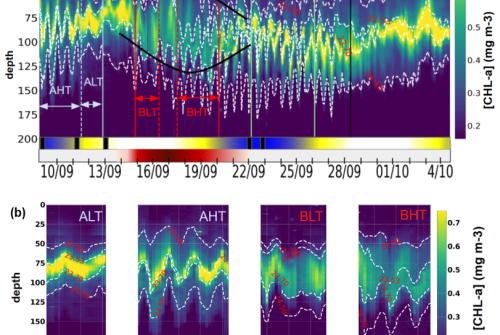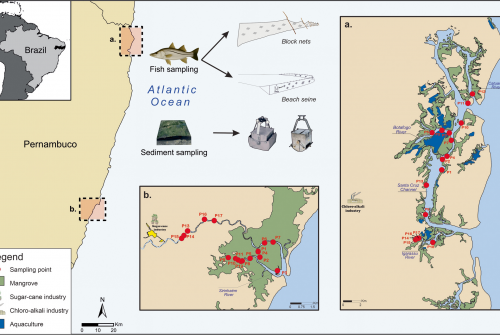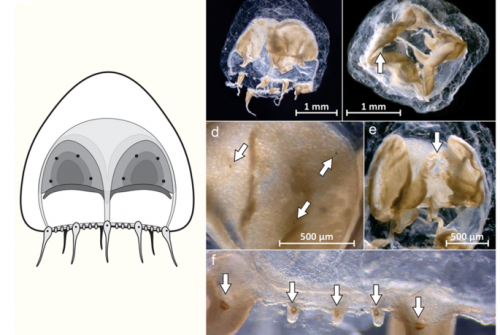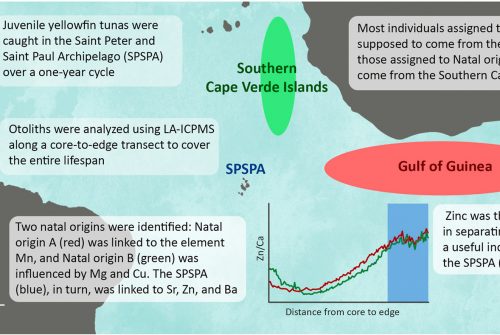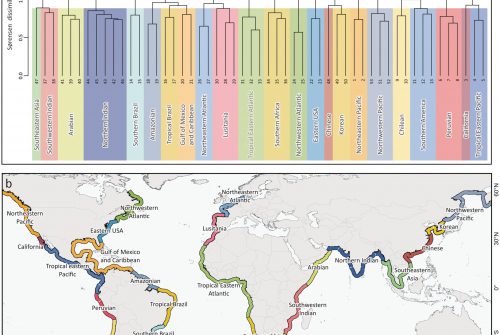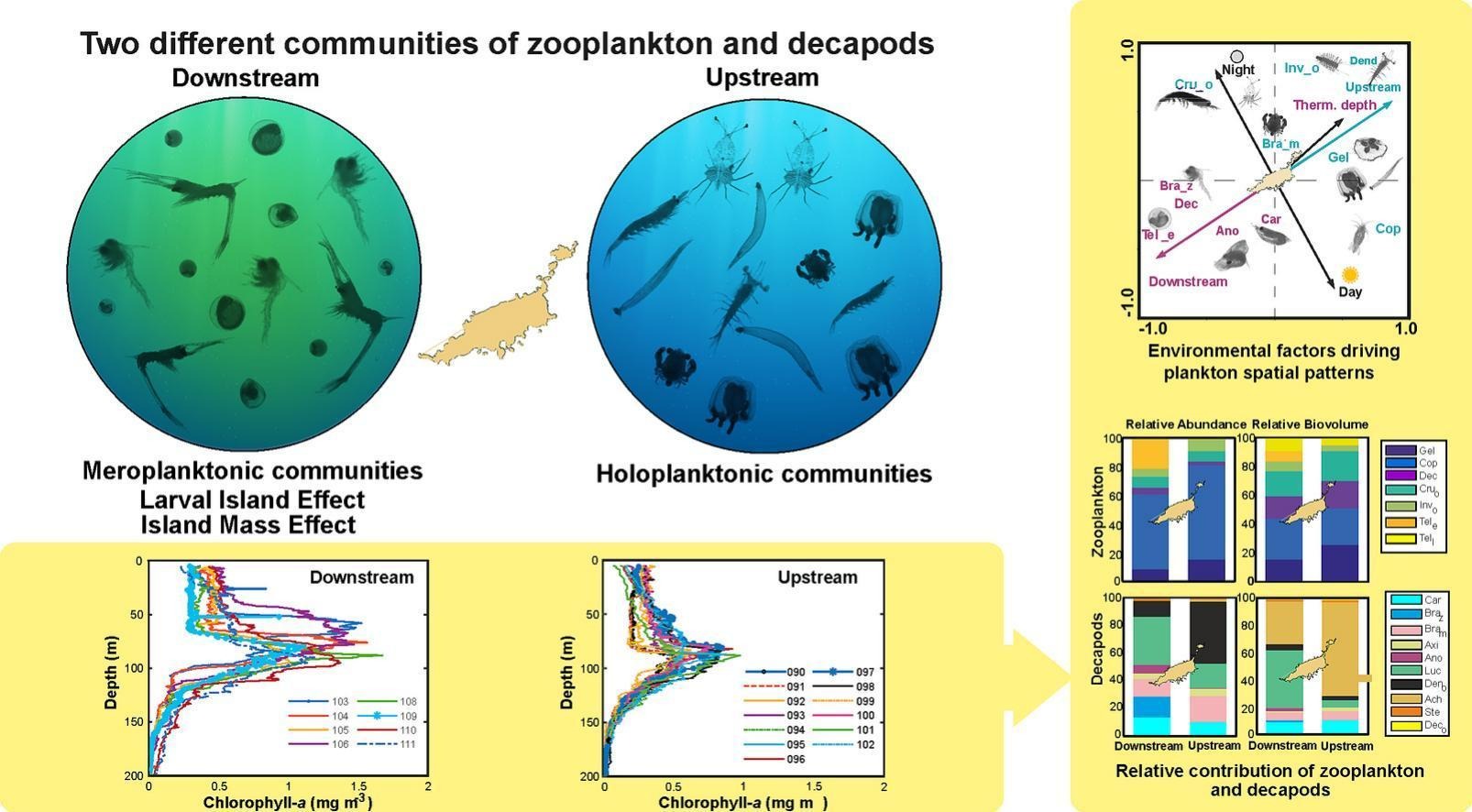
Pelagic ecosystems around tropical oceanic islands are considered oases of high plankton biomass in the middleof oligotrophic “blue deserts”. To understand the dynamics of such a pelagic ecosystem, we used CTD and ADCPdata and zooplankton samples taken from the waters off the remote Fernando de Noronha Archipelago (FNA), Tropical Atlantic. We analyzed how the flow and island topography interactions influence the spatial variability of chlorophyll-a fluorescence and zooplankton abundance, biovolume, and normalized biovolume size spectra(NBSS). We used a 500-μm mesh bongo net to obtain plankton samples in July and August 2010 in areas upstream and downstream of FNA. Zooplankton samples were analyzed with a ZooScan device. Chlorophyll-a peaksand a rise in thermocline indicated a topographic uplift and turbulence downstream of the island, i.e., the “Island Mass Effect”. The NBSS presented a mean slope of – 1.19 ± 0.28, and a mean intercept of 3.98 ± 0.87. Therewere no significant differences in NBSS slopes and intercepts between upstream and downstream areas. Nevertheless, zooplankton and decapod community structures were significantly different between areas: meroplanktonic communities showed higher abundances and biovolumes downstream (p < 0.05). Zoeae of stenopodid cleaner shrimps, anomuran and brachyuran crabs, and fish eggs were significantly more abundantdownstream, indicating a “Larval Island Effect”. Distinct peaks in size spectra due to teleost eggs and decapodlarvae, downstream of FNA, also indicated a Larval Island Effect. Upstream of the island, there was a higherabundance of gelatinous organisms, holoplanktonic decapods, and advanced stages of brachyuran crabs (“Upstream Island Effect”). Also, copepods, gelatinous organisms, large-sized “other crustaceans” (e.g., euphausiids,amphipods, stomatopod larvae, mysids, etc.), teleost eggs, and stenopodids caused abundance peaks in the size spectra upstream. Our study highlights the need for careful management and conservation of parental spawning stocks of fishes and macroinvertebrates surrounding tropical oceanic islands.
DOI: doi.org/10.1016/j.jmarsys.2023.103942
Reference
Lira, S. M., Schwamborn, R., de Melo Júnior, M., Varona, H. L., Queiroz, S., Veleda, D., … & Marcolin, C. R. (2023). Multiple island effects shape oceanographic processes and zooplankton size spectra off an oceanic archipelago in the Tropical Atlantic. Journal of Marine Systems, 103942.



